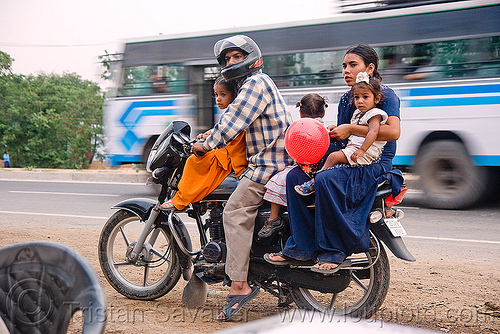 |
| Good-bye winter wonderland |
But TOF recalled another pothole in another place, one which needed no freezing and melting to call it forth from the vasty deep. This was a divot in a street in Chennai, T.N., India, that truly deserved to be called "Mr. Pothole". and this with the utmost respect.
 |
| Napier Bridge in Chennai |
The second, and more important reason, is that drivers of motor cars belong to a lower caste and no important visitor could be allowed to degrade in such a manner. There is a sort of aggressive servility among the folk of India and the drivers fiercely guard their rights and privileges. A hotel guest is not allowed to carry his own computer bag as he walks to his car. Someone will take it from him with bountiful smiles and walk with him the few steps to the car and hand it back. (The doorman of the Chola Sheraton was named Nagarajan, or "King Cobra". And now you know the origin of the sobriquet "Nagarajan the Ironhand" in the Journeyman stories.)
But TOF digresses.
 |
| St. Thomas was buried here |
On the southern stretch, toward Santhome, stands the Basilica of St. Thomas, where the apostle lay buried before the Syrians came and carried his body back to the Middle East. (The southern cone of India is up to 20% Christian.) It was at San Thome that the Great Tsunami finally died, just short of the big iron cross on the grounds before it reached the church.
 |
| Beach Road innocently begins its journey |
The black folk in the grass huts were fishermen, and TOF saw wooden fishing boats that must have been like the ones that once plied the Sea of Galilee. They fished standing up in the boats and throwing nets overboard, usually at night. TOF speculated that the fish can't see at night and the fishermen spot them because of the nightlights the fish carry. Several of the boats TOF glimpsed on shore bore the name "St. Peter Fisherman Society, and wondered if perhaps they were fishers of men.
 |
| Container trucks from the Port. Please to observe the potholes. |
Lanes, and even directions, are somewhat notional on the streets of Chennai. The road was three lanes north and south. Unfortunately, these were the same three lanes. They were shared by cars, trucks, auto-rickshaws, motorcycles, bicycles, pedestrians, ox-carts, cows, and the aforesaid container trucks from the Port of Chennai.
 |
| This is called a "flyover." Indians use them in preference to intersections. The crossing of two such roads is one of the signs preceding Armageddon. |
This brings us back to the subject of potholes.
 |
| Typical traffic flow: sedans, auto- rickshaws, and a few motorcycles. |
The driver stopped. He studied the puddle.
Then he started forward. The car inched into the puddle. It went down, and and then down some more. The pothole concealed by the scrim of brown muddy water was not the size of Meteor Crater, AZ, but relative to TOF's ride it was sufficient unto the day. Deeper went the car until the entire car was in the pothole. The water lapped the floorboards. TOF raised his shoes and cowered on the back seat, determined like the captain of Titanic to go down with the ship.
Then the car lost traction.
The driver applied corrective measures; i.e., he gunned the engine fiercely and spoke disparagingly to the pothole. He even tried backing up. The car rocked and settled into the mud. The tires spun. The car went nowhere.
This being India, there were 853 people of various ages gathered around watching. This is the national sport of India.¹ The watchers all jumped into the pothole, organized themselves into a spontaneous work-gang, and pushed the car forward. Traction was regained. One more push and... the car lurched out of the hole. Everyone clapped. Largess was distributed to the now wet, muddy, smiling bystanders, who waved cheerfully as we drove off.
1. most popular sport. Well, cricket is; but no one understands cricket while standing around watching stuff is more easily learned. It is most literally a spectator sport. The second-most popular sport is running after over-crowded buses and leaping on board while the bus is pulling away. The is done by young men trying to impress young women, and they will actually wait for the bus to pull out just so they can demonstrate their prowess at this. If you miss the jump and fall in a pothole, you lose.
This is a rule in India. You will never find a friendlier or more helpful folk than Indian bystanders. TOF once saw eight people helping a man change a tire on his car. (Look, someone has to hold the hubcap, the spare, each individual nut, etc., right?) TOF also saw a family of five riding on a motorcycle, but that is another story. It looked very much like this one:
 |
| The one TOF saw was in downtown Chennai |
Which returns at last to the Great Pothole of High Street. You call THAT a pothole? TOF laughs at such potholes, ha-ha.


No comments:
Post a Comment